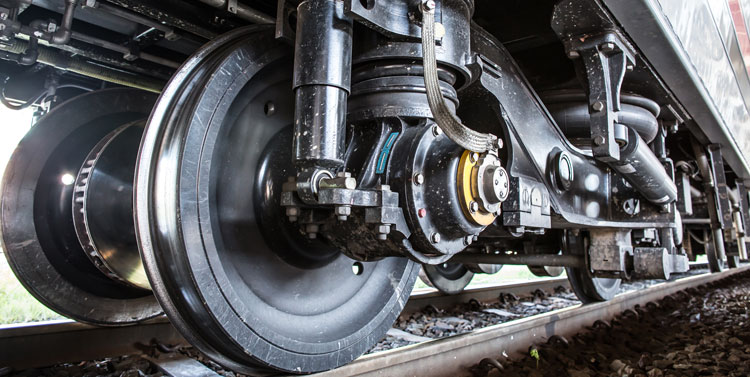 How often are your employees forgetting small parts of your technical processes – and are you capturing these instances? It’s likely happening more often than you realize, and it creates a ticking time bomb for any railroad.
How often are your employees forgetting small parts of your technical processes – and are you capturing these instances? It’s likely happening more often than you realize, and it creates a ticking time bomb for any railroad.
Each small slip-up could be the tipping point in a perfect storm of variables that combine to create disaster – as one company learned in the worst railway disaster in over 100 years.
A Series of Unfortunate Events
After a freight train was stopped for the night just outside of Lac-Mégantic in Quebec and the lead engineer had left, the petroleum-laden locomotive caught fire. According to Nantes Fire Chief Patrick Lambert, “We shut down the engine before fighting the fire. Our protocol calls for us to shut down an engine because it is the only way to stop the fuel from circulating into the fire.”
A track maintenance foreman unfamiliar with the operation of railway air brakes and at least one other person confirmed that the train was safe afterwards, but they didn’t realize the hand brakes were not properly deployed. And “with all the locomotives shut down, the air compressor no longer supplied air to the air brake system,” so air leaked from the brake system till it could no longer hold the train. It rolled downhill till it hit the town of Lac-Mégantic, seven miles away. 47 people died, making it the deadliest non-passenger rail accident in Canada’s history.
The hand brakes were thought to have been in proper working order – so why didn’t they hold? As the Transportation Safety Board in Canada found:
The QRB valve on the second locomotive (MMA 5026) did not trip to exhaust brake cylinder air when tested. . . . the examination showed that non-standard repairs had been applied to the valve’s release mechanism in an attempt to keep the valve working. [And] if the QRB valve does not trip, the hand brakes will not provide any braking effort.
The lead engineer was not aware of this. And it wasn’t just the air brakes and hand brakes at fault though. This was that “perfect storm” scenario where there had been other opportunities to prevent tragedy.
Eight months before the derailment, the lead locomotive was sent for repairs. A sense of urgency, combined with improperly prioritized needs around getting the job done, resulted in someone using an “an epoxy-like material that lacked the required strength and durability” to fix the engine. This material failed, led to engine surges and eventually caused the fire that set off the unfortunate chain of events resulting in the derailment.
It’s easy to see how it happened. And it can be avoided today with simulation/scenario based training.
“Any railroad that does not use simulation …
… is learning with real mistakes”
Simulations for Saving Costs and Lives
Used by Norfolk Southern, CSX and BNSF, Heartwood’s Air Brake Test (CFR 232) simulation trains conductors and mechanics on the complete inspection process. “It allows a student to visually inspect a variety of randomized freight cars, as part of a train, while manipulating brake components as necessary to properly configure the brake system. The student determines correct brake pressure and inspects for brake application and release via an exam practice mode.”
This simulated training is available anytime, anywhere – and sends results from anywhere as well. It offers additional practice, to keep those fail safes top-of-mind, while demonstrating how easily a series of neglected safety redundancies become ineffective.
Mechanics, conductors and engineers get additional practice at their pace, from any device, with a record of their performance given at the end. And it’s all done without taking equipment out of service for training purposes, so it can (and should) be done continuously until every bit of the process becomes second nature.
And it also helps identify disconnects. If a railway sees its employees making similar mistakes or missing things at a certain point in the process, it’s a red flag for additional attention.
Imagine if there had been such a red flag event at any point in the Lac-Mégantic tragedy?
- Checking the QRB valve-release mechanism to ensure it was engaging when needed
- Additional hand brake tests to fully vet proper functioning
- Expanded air brake functionality training with railyard mechanics
- Handbrakes set, applying the appropriate amount of pressure and acting as a fail-safe
When employees forget a crucial step in a safety process, many times nothing will happen. And this can encourage sloppy behaviors that inevitably lead to disaster. It’s easy to forget what’s at stake, particularly as most will never experience an emergency scenario that the fail safes are designed to protect against.
With simulation based training, railroads can run engineers, conductors and mechanics through scenarios they would be unable to replicate in the real-world – driving home the need for attention to every step of the process. From there, refresher training and regular testing (via those sims) will ensure that correctly applied standards stay top-of-mind and even second nature.
Help your railroad prevent mishaps by adding Virtual Interactive Simulations to your training toolbox. Choose from a Catalog of training solutions (Air Brake Test, Pre-Departure Inspection, Locomotive Daily Inspection, Air Flow Simulator, Blue Signal Protection & more) available for your team to deploy today – Reach out to start the process.


